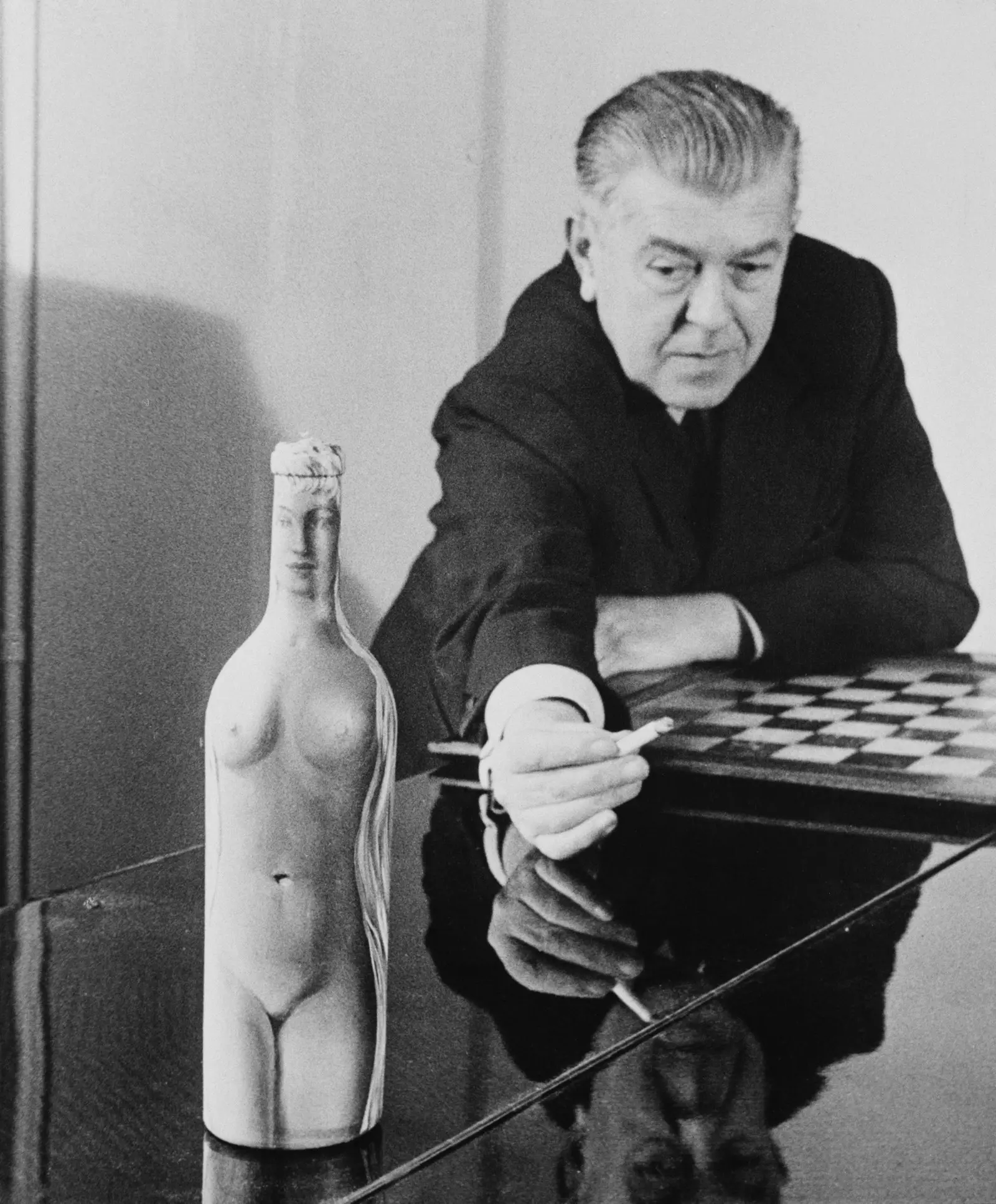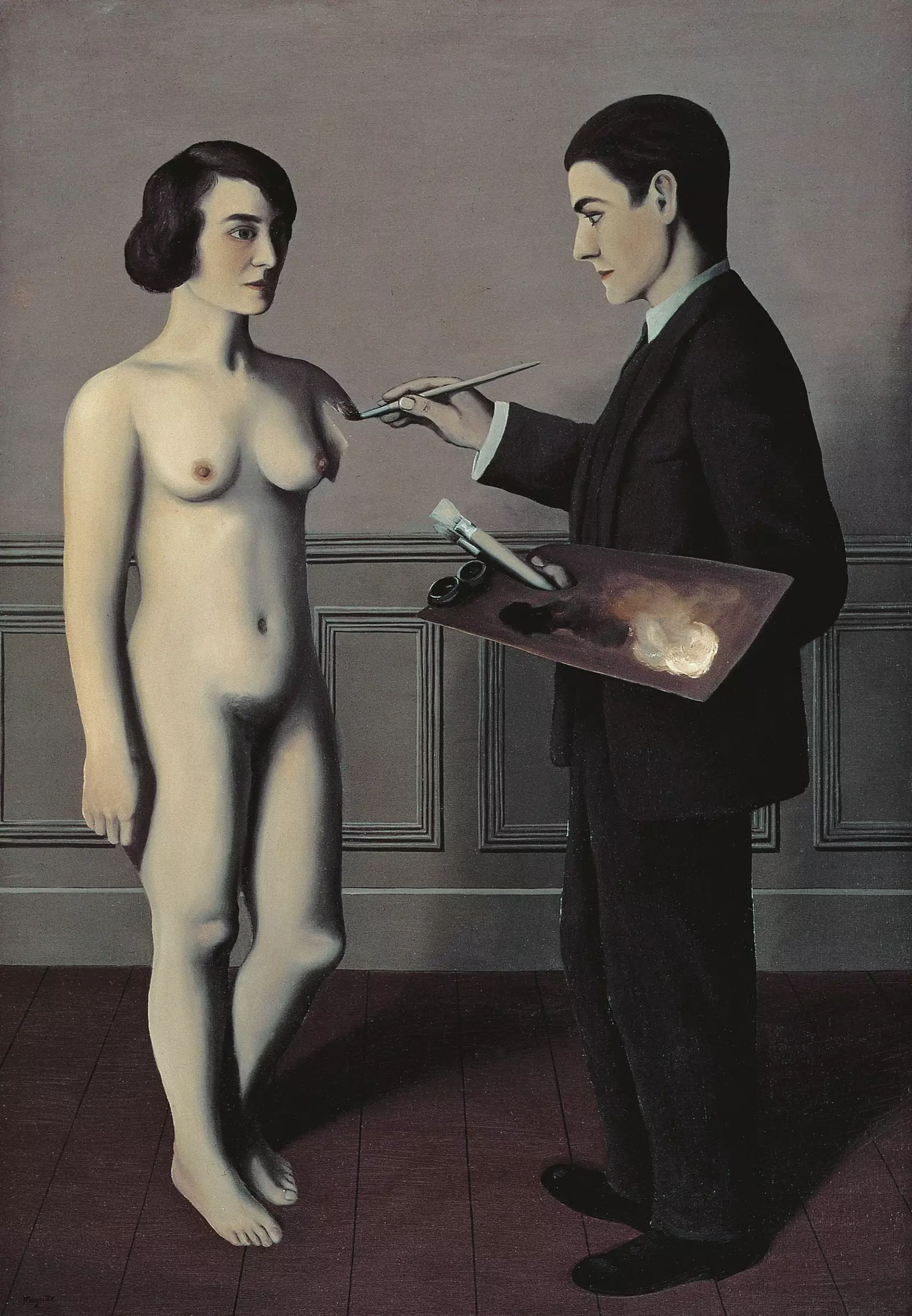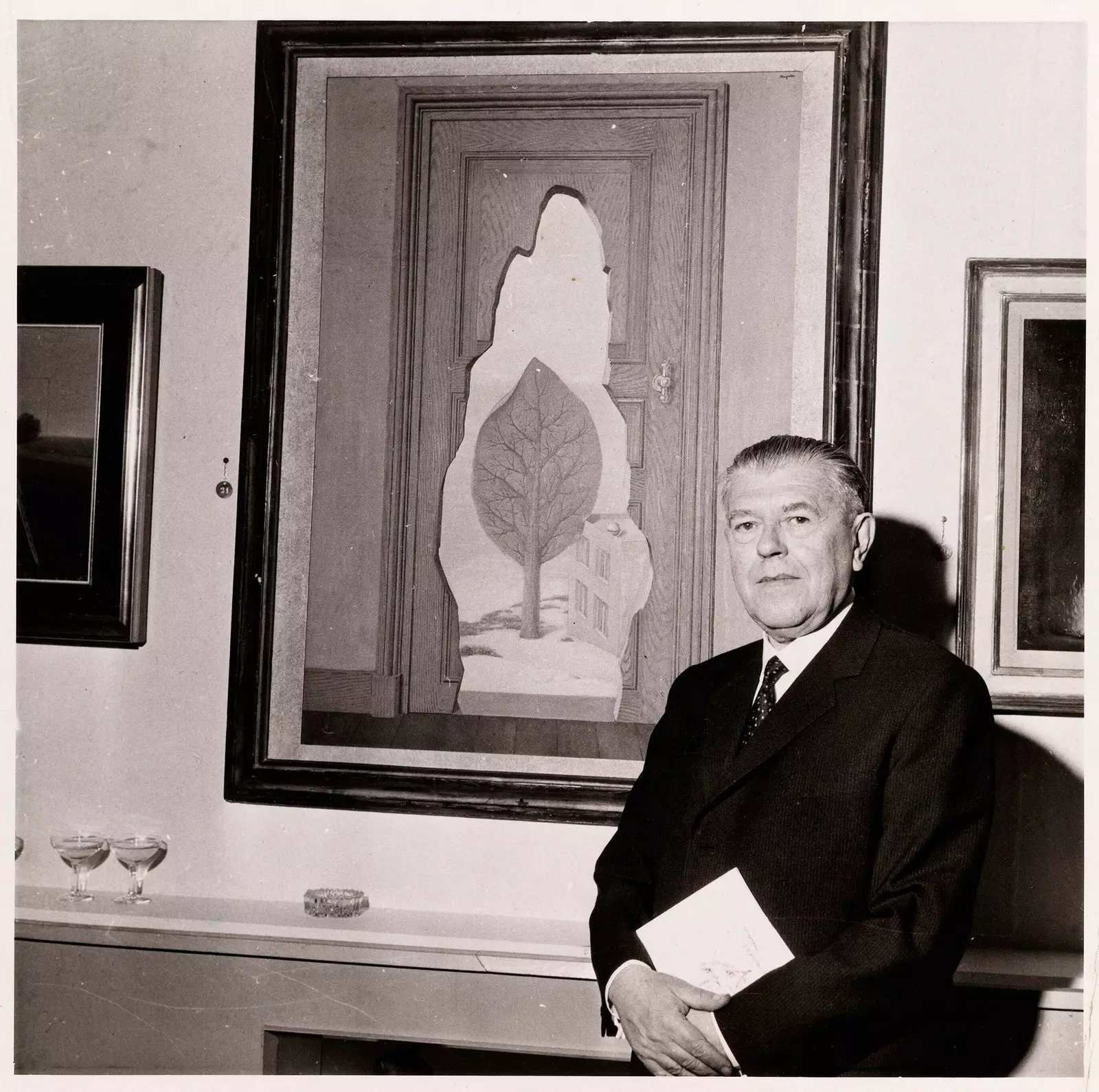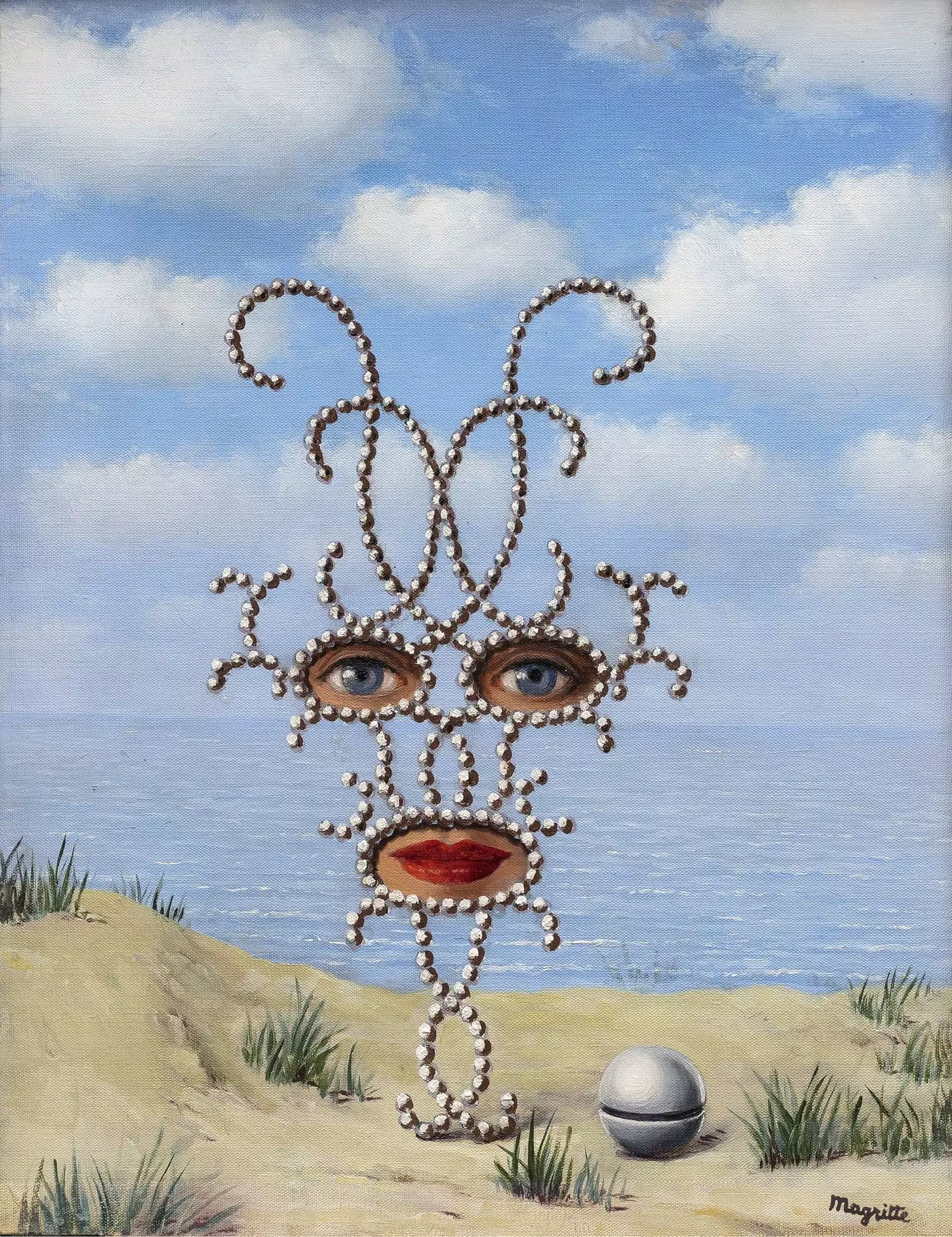The dream is an indomitable, dark and absurd space where anything is possible and nothing is what it seems. Reality? Probably too.
René Magritte knew this and in his paintings materialized those dreams with a playful sense of misunderstanding. It's raining gentlemen with a bowler hat. Two lovers kiss covered by wet veils that prevent them from seeing or touching each other. A toy locomotive enters the living room through the fireplace. The cast of Napoleon's funerary mask is camouflaged with a blue sky and white clouds so much like the ones we'll someday see on the wallpaper in Andy's room in toy story.
This is Magritte: in his brushstroke of the naïf rubs against Hegel, or is it Kafka?
And it is that yours is a painting of bewilderment and ambiguity, that more than giving us answers he always leaves us doubting and on the tightrope of perceptions. So more than “a rose is a rose is a rose”, what is coming to tell us the surrealism of this Belgian painter is that "one thing is another thing that is another thing" . And so, until the allusion and the infinite illusion.
Where Dalí bets on scandalous and grandiloquent fantasy, Magritte does so on the conceptual enigma. In fact, a painting of a pipe with the inscription "This is not a pipe" has served entire generations as a chewy introduction to art contemporary.
That is, as an irrefutable fact that each image is a representation and that each representation is a betrayal of reality. Is that window really a window? Is that bird a bird? Is that man really a man? Is there any certainty out there?

Magritte with the work 'Femme-Boteille', c. 1955.
Direct and vindicated antecedent of pop art and conceptualism, if in the XXI century we continue talking about its bowler hats, its apples and its broken windows, if we still continue to reproduce his faceless bureaucrat gentlemen on cups, folders, coasters, magnets and tergal sheets, it is probably because his painting never ceased to have an advertising halo (his other profession of his) and also amuses us as much as it intrigues us.
Starting on September 14, all Magritte fetishists, fans and art lovers in general will be able to enjoy a great anthology of the Belgian at the Thyssen-Bornemisza Museum in Madrid.
The title of the exhibition, The Magritte Machine, is a concept through which its curator, Guillermo Solana, wanted to highlight the repetitive and combinatorial component in the painter's work, whose obsessive themes return again and again with countless variations.

'Attempt at the Impossible', by René Magritte.
"Given my will to make the most familiar objects howl, these had to be arranged in a new order and acquire a disturbing meaning”, said the painter.
But, where does that disturbing and so personal vision come from? Magritte was born in Lessines, Belgium, in 1898, to a textile merchant father and a milliner mother, a woman who committed suicide when he was thirteen jumping into the river Sambre. An event that marked him to the point of writing: "So that my mother would not uninhabit my memory, I decided to be a child all my life."
Her mother's body was not found until three weeks later and was pulled from the waters with her shirt (or her skirt, there are different versions) folded over her head and hiding her face from him.
His son was present at that fateful moment and that image of the mother has frequently been linked to the appearance of characters with their faces hidden by a rag in Magritte's paintings, but the truth is that there is no evidence that it was a conscious association.

Rene Magritte.
After drawing since childhood, and After training at the Royal Academy of Fine Arts in Brussels, Magritte went through futuristic and cubist styles, while he continued to support himself with illustration and advertising work.
Later, inspired by the rise of french surrealism, he made the leap to the dreamlike and moved to Paris in 1927 with his wife, Georgette Berger. Those ended up being three years of prodigious production and social frustration.
And it is that, despite being one of the most advanced students of the group, he continued to be a stranger to the circle of surrealism, which at first welcomed him but later left him empty due to his disagreements with Andre Breton. After the contempt and the stock market crisis, the couple decided to return to their country.

Sheherazade by Rene Magritte.
Magritte, who dressed like a banker and was known to paint on his dining room table, saw himself as a "secret agent". a kind of fifth columnist in the war against bourgeois values.
He once said about his mission: "Too often, by a twist of thought, we tend to reduce the strange to the familiar. I intend to do the exact opposite, return the familiar to the strange."
The Thyssen exhibition brings together more than 90 paintings, It is completed with a selection of photographs and home movies made by the artist himself, which is part of a traveling exhibition curated by Xavier Canonne, director of the Musée de la Photographie de Charleroil.
After his presentation in Madrid, Magritte's machine will travel to Caixaforum Barcelona, where it can be visited from February 24 to June 5, 2022.
SUBSCRIBE HERE to our newsletter and receive all the news from Condé Nast Traveler #YoSoyTraveler
